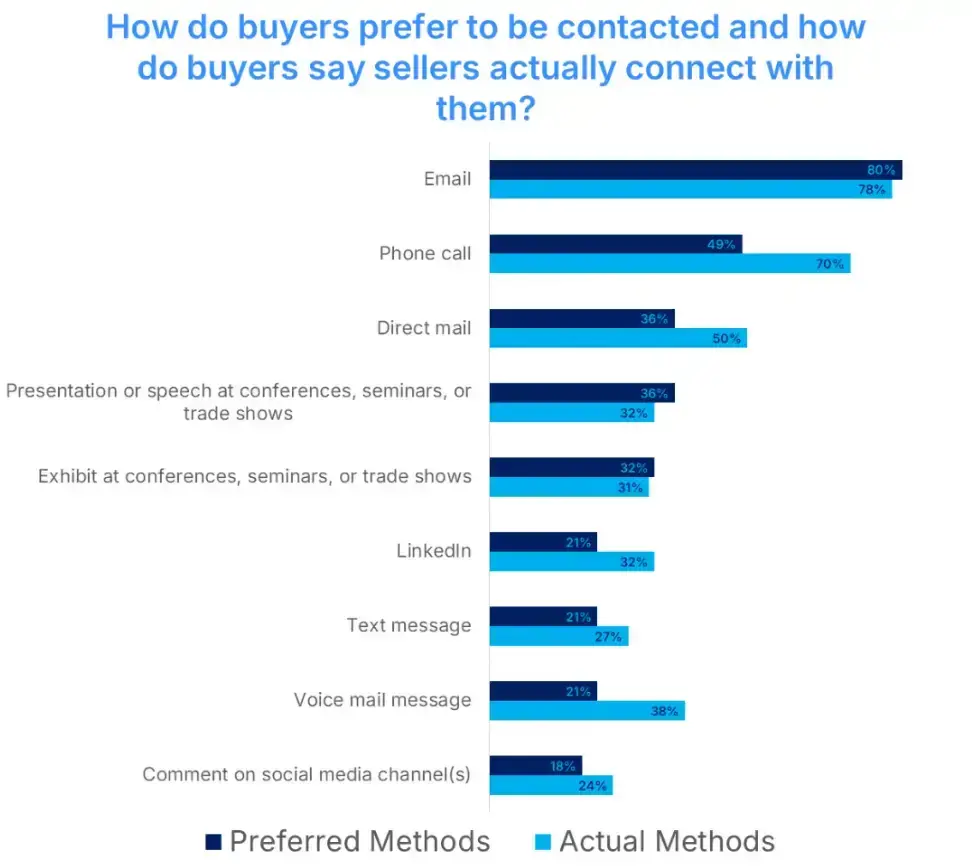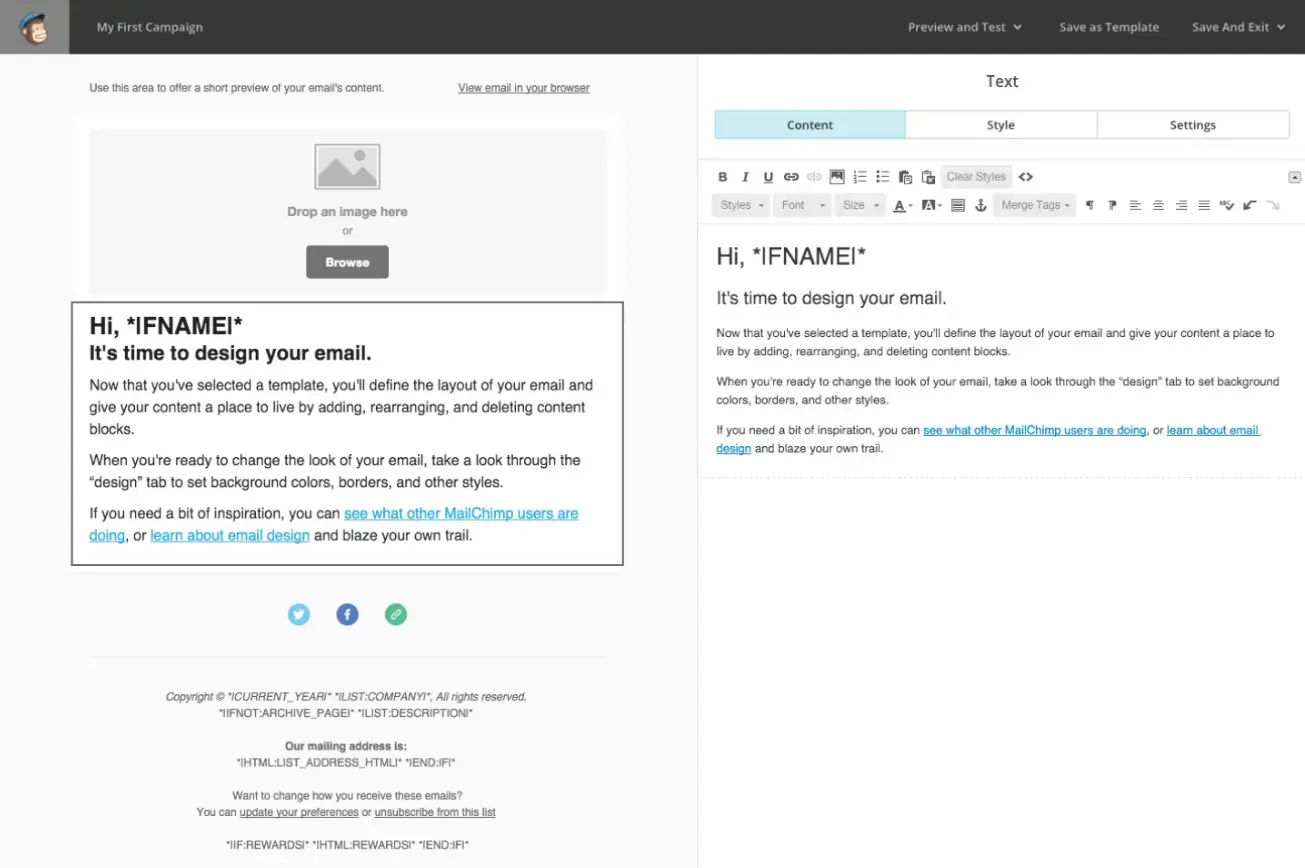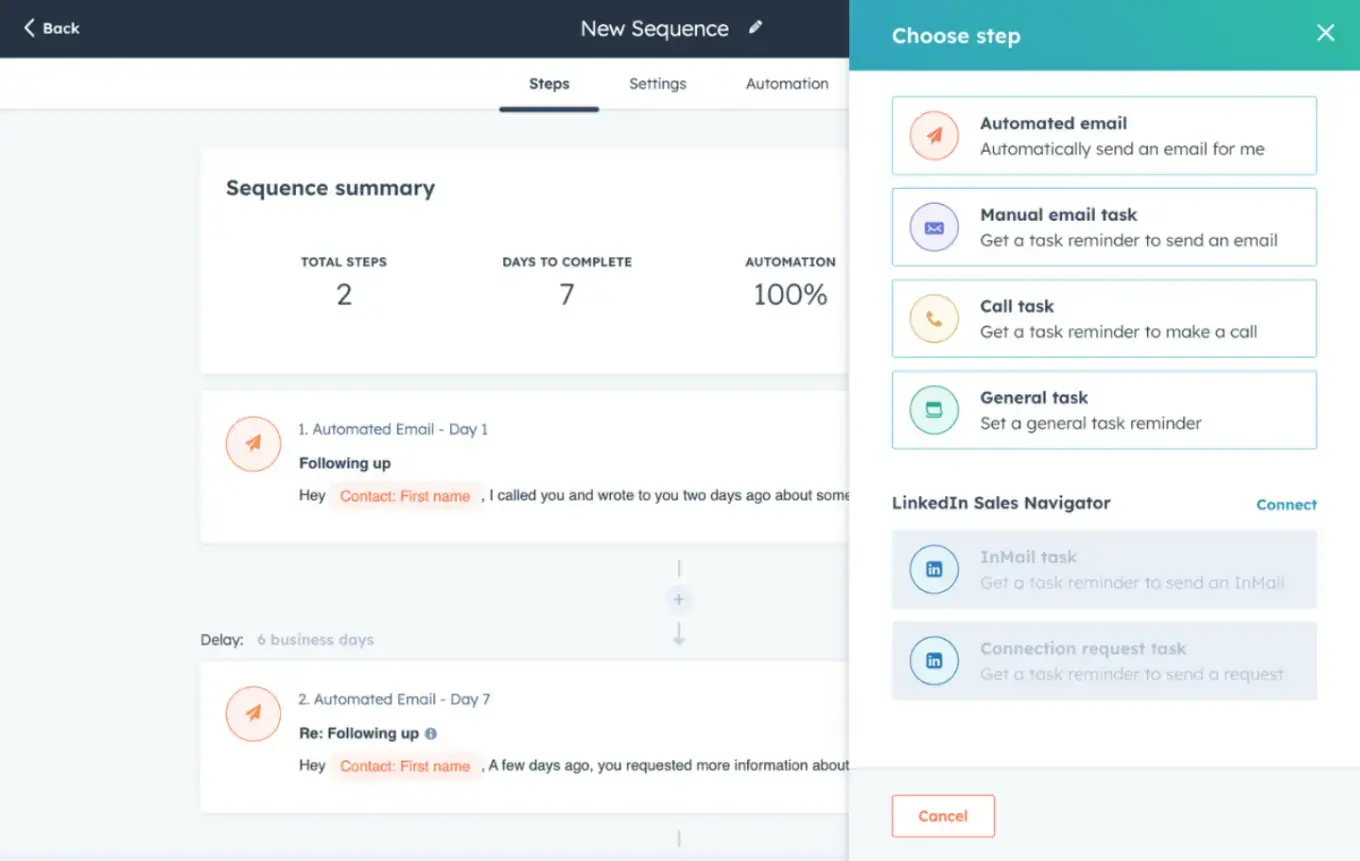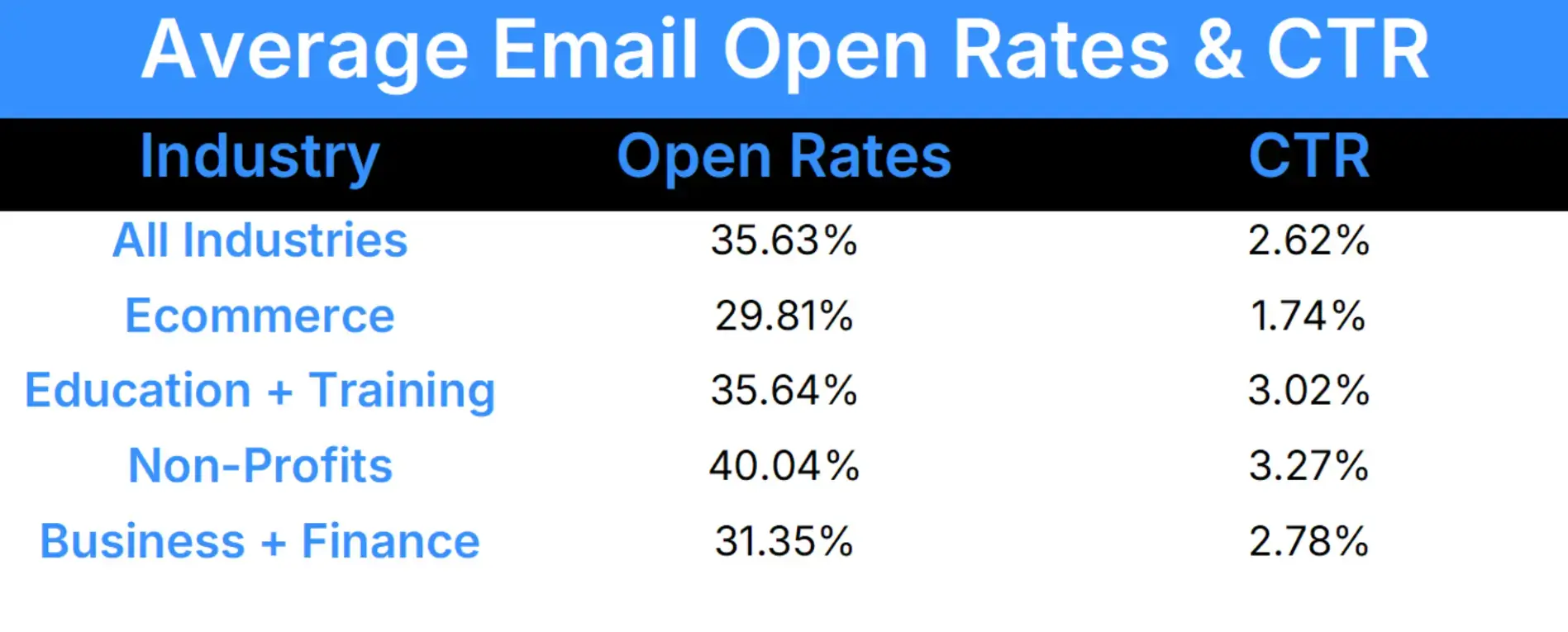In a world where social media is all-pervasive and instant communication is the norm, investing in data-driven email marketing may not be the best decision.
However, despite the popularity of these newer communication channels, 80% of B2B buyers still prefer to be contacted through email, far more than any other channel.
Much like a step-by-step AI homework helper that guides students through complex problems, data-driven email marketing offers businesses a structured approach to reach their audience effectively.
Article Shortcuts:

Source: Hubspot
Consumer preferences indicate that email marketing can lead to success. However, “can” does not guarantee “will”.
So, how can marketers confidently invest in email marketing and reap the rewards they deserve? The answer is simple: with the help of data!
Studies show that 87% of marketers consider data as their most underutilized asset, while 64% believe data-driven marketing is crucial for survival in today’s landscape.
Data-driven email marketing is not only essential for helping you reach your target audience, but it can also help your business grow like never before! And we’re here to tell you how.
5 Key Benefits of Data-Driven Email Marketing
- Enhanced Targeting
- Easier Personalization
- Optimized Content Marketing
- Improved Marketing Efficiency
- Higher Lead Generation
1. Enhanced Targeting
Targeting the right audience can ensure that your marketing efforts reach people who are likely to be interested in your offerings or have a high chance of conversion.
Data-driven email marketing uses demographic and behavioral data to identify ideal targets for your business. The data used can be anything from their location and revenue to past purchase behavior or their tech stack.
You can even analyze historical data and market trends to predict future demand and target prospects at the right time. Utilizing this type of data can present numerous potential opportunities. Such as:
- Providing location-specific offers
- Recommending products and services that address their pain points
- Providing alternative products or services to the ones they use
- Contacting them because of their recent online search history
Businesses have several ways to access this data, particularly in B2B settings. However, the following two are the most common ones:
Data Service Providers
These organizations specialize in providing access to customer data, particularly contact information.
Some data service providers allow their clients to use their platform for on-demand access to customer data. This type of business typically incorporates a subscription model and usually offers additional features that are seen in CRM tools.
There are also data service providers, such as Thomson Data, that allow their clients to customize data in bulk through a single transaction. This is a considerably less expensive method compared to the other model.
Build Your List
Building your email list is also an alternative. It requires significantly more effort, particular skillsets, expertise, and specialized tools that many businesses may lack access to.
However, once you have built your email list, it becomes one of the most cost-effective ways to access customer information.
After building an email list, engaging in data-driven email marketing will be much easier. Many email lists can be integrated with your existing CRM software or email marketing tool, making the process much more efficient.
2. Easier Personalization
The importance of personalization cannot be understated. Research shows that 73% of customers expect personalization as a requirement, while 61% say that they feel like companies treat them as just a number.
On the business side, 89% of decision-makers believe personalization is crucial for success. However, 63% of marketers are struggling to implement it.
This is where data-driven email marketing can be a game-changer. Sending emails with personalized content, such as using the recipient's name or addressing their specific pain points, can drive sales and enhance engagement.
When your target receives an email that greets them with their name and talks about their specific pain points, they’ll know two things:
- That they are important to you
- That you have the skills and expertise to solve their problems
Of course, this comes with its challenges. Mainly collecting the required data and combining it with your mass marketing efforts.
Collecting Data for Personalization
Collecting data for personalization can be easy or difficult based on how extensive you want the personalization to be.
If you just want to include your target’s name and position in the email, most commercially available email lists can accommodate your needs.
However, if you want to address specific pain points or pitch solutions specific to their needs, there are only two options available:
- Manual Research: Send in your market research team or hire outside help to find everything you need to know about your target audience. Very expensive in most cases and only worthwhile when you’re researching a low number of high-value leads, such as the case with Account-Based Marketing.
- Buy It: Some businesses provide Data as a Service solutions that allow you to buy comprehensive information about your prospects. Less time-consuming and more efficient at scale.
Using Personalization for Mass Marketing
Personalizing emails for mass marketing is not a new concept at all.
Even the earliest versions of mailing software, such as Microsoft Outlook, help create personalized emails at scale. Limited to adding a name and address in the greetings.
Then came CRM software and email marketing tools that supported even more personalization, replacing parts of the email with recipient-specific information.

Source: Mailchimp
Now, with AI in the mix, creating personalized emails has become much more efficient. AI-powered tools can now create personalized emails from scratch, with the messaging centered on the recipient’s pain points and your objectives.
3. Optimizing Content Marketing
The importance of content marketing for a business in today’s world can never be overstated.
While direct conversations with a sales representative - whether in person, by phone, or online - are important, content marketing forms the foundation of any campaign.
However, content marketing is not without its challenges, and various factors affect its success. The most recent report from Content Marketing Institute sheds light on some of these:
- Out of the 71% of B2B marketers who say that their content marketing efforts are only moderately effective or not effective at all, 35% claim it is due to not being data-driven.
- 45% claim that aligning content with the buyer’s journey is their biggest challenge.
- Creating content that converts is a significant challenge for 55% of B2B marketers.
- 44% claim that they lack the necessary technology for creating personalized content.
- 71% of B2B marketers distribute content through email newsletters, while 63% use other forms of email marketing.
- Emails are the third most effective content distribution channel, after in-person events and webinars.
These facts show that personalization and understanding the buyer remain two of the biggest challenges faced by content marketers, while email remains one of the most effective channels.
For businesses engaging in data-driven email marketing, these facts present significant opportunities.
On the one hand, data enables you to understand your buyers, including their pain points and where they are in their customer journey.
On the other hand, optimizing the content of your emails with data-oriented personalized content can ensure that they drive both engagement and conversions.
4. Improved Marketing Efficiency
There’s a reason many marketers are wary of putting all their marketing eggs in the email basket. Globally, 376.4 billion emails are sent every day, and more than 45.6% of these emails end up in the spam folder.
How can marketers confidently rely on email marketing when barely more than half of their email marketing efforts reach their intended audience?
However, this kind of reasoning is amateurish. When you look at cold, hard facts, email marketing is highly profitable.
Email marketing has been shown to bring $36 for every $1 spent. This is 18 times what they receive from PPC tools such as Google Ads. In terms of cost and ROI, email marketing is right there at the top.
The reason for this is simple. ROI has two sides: returns and costs. It is on the cost side that data-driven email marketing makes a huge impact.
Reducing Cost of Effort
Email marketing is very receptive to automation. With access to the right data, you can automate and streamline your email campaigns based on specific triggers.

Source: Hubspot
For example, sending an automated email when a user visits your website or when a buyer fails to complete their online purchase. This ensures that your responses are swift and work without manual intervention.
Reducing Time & Skill Requirements
Automation itself reduces the time required to respond to customer inquiries. However, that’s just the tip of the iceberg.
By analyzing demographic, behavioral, and predictive data, it is possible to segment your target audience based on various criteria.
Combine this with automation that supports dynamic content, and you can send customized emails tailored to each segment, using content that resonates with them.
Creating content such as videos, images, eBooks, and white papers requires specialized skills. Skills for which you need to hire experienced professionals.
Comparatively, emails are much easier to create. There are even programs that can create highly personalized emails in seconds at the click of a button.
One such platform is Emailchef—a powerful yet user-friendly email marketing tool designed specifically for businesses that want to combine email automation and personalization without technical complexity.
Emailchef allows you to create data-driven campaigns using real-time behavioral insights, advanced segmentation, and visual workflow builders that automate communication based on how contacts interact with your brand.
Whether you're looking to recover abandoned carts, onboard new subscribers, or nurture leads with personalized content at scale, Emailchef helps you do it all—faster, smarter, and with less effort.
It also integrates seamlessly with most CRMs and e-commerce platforms, making it an ideal solution for companies aiming to boost efficiency and ROI through intelligent email automation.
Compare all of these factors, and you’re looking at one of the fastest, least expensive marketing strategies that requires the lowest human capital.
However, to truly exploit these advantages, you need data-driven email marketing. From identifying leads to personalizing content and even improving the chances of conversion, data-driven email marketing contributes to the effectiveness of any email marketing campaign you undertake.
5. Higher Lead Generation
Generating leads is the ultimate goal of any marketing strategy. After all, leads bring in profit.
Although every marketing strategy aims to generate leads, data-driven email marketing, in particular, is incredibly effective. This is because it can play a significant role in multiple stages of the lead generation process.
Identifying Leads
Data-driven email marketing does not just collect contact data of the target audience. It collects comprehensive information that can help identify prospects who fall within your ICP.
The more data you have on your target audience, the higher your chances of identifying leads with the highest potential for conversion.
Initiating Contact
The start of this blog has already mentioned how buyers prefer to be contacted through email over any other channel.
So, using cold email marketing for lead generation should be a no-brainer. However, there is one major issue: the average open rates and click-through rates (CTR) leave something to be desired.

Source: Mailchimp
This is where data-driven email marketing shines, especially in how it helps with personalization.
Reports indicate that personalized CTAs perform 202% better, while personalized emails have 26% higher open rates. That’s a massive improvement from generic cold emailing!
Nurturing Leads
Once a lead becomes interested in your business offering, they can be considered a Marketing Qualified Lead (MQL).
From this moment on, you not only have to retain their interest but also keep them engaged, improve their perception of your brand, and guide them down the marketing funnel.
Data-driven email marketing can help you achieve all of these goals, especially with the help of personalized content that addresses your customer’s pain points and offers prompt responses through automation.
Your leads' behavioral data can also help you qualify them more precisely and prioritize your outreach efforts accordingly.
Finalizing the Sale
Email marketing may not be the most effective way to finalize a sale, but it can significantly enhance the customer experience at this stage.
Emails are beneficial for sending confirmation of sales and additional information.
By tracking existing customer information, marketers can use data-driven email marketing to periodically send targeted marketing resources, fostering lasting relationships and enhancing customer retention.
FAQs
1. What is data-driven email marketing?
Data-driven email marketing utilizes customer data, including behaviors, preferences, and demographics, to personalize and optimize email campaigns, resulting in improved engagement and conversions.
2. How do I collect data for email marketing?
Data can be collected via sign-up forms, customer surveys, tracking cookies from their site, previous purchase history, and user responses to previous emails or campaigns.
3. What kind of data should I collect for email marketing?
Important data such as demographics (age, location), customer behavior (past purchases, website visits), engagement metrics (open and click rates), and preferences (email frequency, product interests).
4. How does personalization work in email marketing?
Personalization uses data to modify the email content of each recipient, like using their name, suggesting products based on past behavior, or adjusting email timing for their time zone.
5. Is data-driven email marketing expensive?
Although there may be upfront costs (tools, data collection, etc.), email marketing with data-driven decision-making can be cost-effective over time, resulting in enhanced marketing campaign effectiveness and higher ROI.
Conclusion
Data-driven email marketing is by no means a necessary tool to engage in business. However, with its significant impact on the marketing process, you will be generations behind your competitors if you do not us

